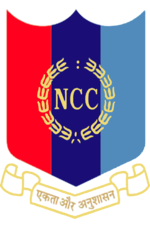Free Courses Sale ends Soon, Get It Now


Free Courses Sale ends Soon, Get It Now



Disclaimer: Copyright infringement not intended.
Context
Details
History
Motto and Aim
Organizational Structure
Key Points
Training Establishments
Conclusion
The NCC stands as a significant youth organization in India, contributing to character-building, leadership development, and fostering a sense of responsibility among young citizens while promoting unity and discipline.
|
PRACTICE QUESTION Q. Which among the following is NOT true regarding the history and evolution of the National Cadet Corps (NCC)? A. The NCC originated from the University Officers Training Corps (UOTC) established in 1942. B. It underwent changes, including the addition of the Air Wing in 1950 and the Naval Wing in 1952. C. The NCC's training was made compulsory following the Indo-Pakistani War of 1971. D. The motto "Unity and Discipline" was finalized for the NCC in 1980. Answer: C |
© 2024 iasgyan. All right reserved